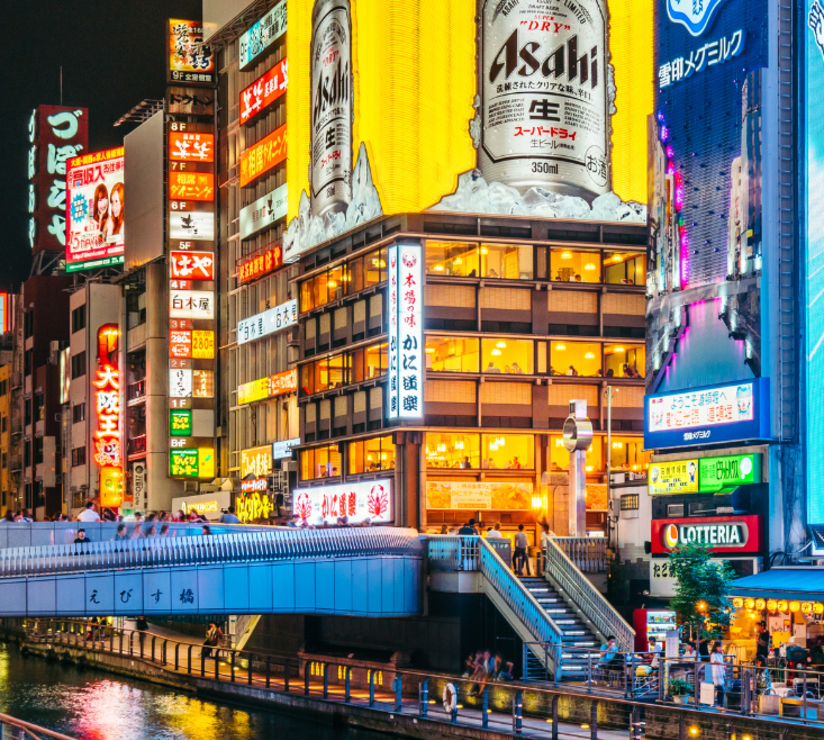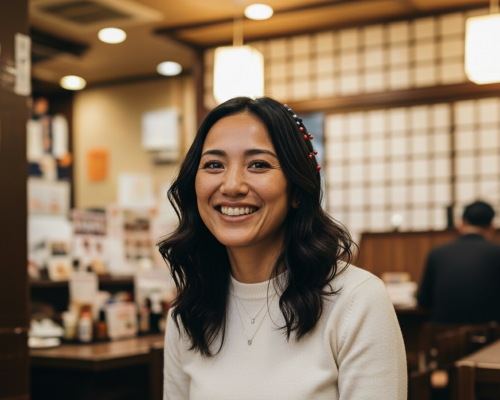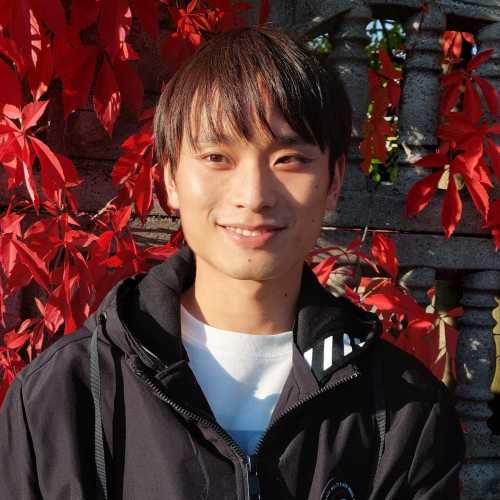Taku was an amazing guide! His English was great and he was very knowledgeable. We got to do everything on our list but also hidden gems. Highly recommended!Carlos De La Torre, Osaka, 2025
See Osaka’s hidden side on a private tour
Private tours, designed around you
Table Of Contents
- Must-See Iconic Attractions That Actually Deliver
- Overrated Osaka (And What Locals Do Instead)
- Where Locals Actually Eat: Authentic Osaka Food
- Food Tours and Culinary Adventures
- Osaka's Café and Dessert Scene That Locals Actually Visit
- Shopping in Osaka: From Luxury to Local Finds
- Neighborhood Explorations: Where Locals Live and Play
- Things to Do in Osaka by Interest: Matching Activities to Your Passions
- Osaka After Dark: Nightlife That Locals Love
- Practical Tips for Visiting Osaka
- Accommodation Options Beyond the Obvious
- Day Trips and Extended Adventures
- FAQs
Things to do in Osaka
I've spent my entire life in this incredible city, watching tourists rush past some of Osaka's best experiences while standing in hour-long lines for places that locals avoid.
As someone who's half-Japanese and half-skeptical of travel guides that paint everything with the same glossy brush, I'm here to give you the real story about amazing things to do in Osaka.
Not long ago, I watched a confused tourist family spend three hours in line for mediocre takoyaki while the best stall in the city sat empty just two blocks away.
That's exactly why I'm writing this – I want you to experience the Osaka that made me fall in love with this city as a kid, not the sanitized tourist version that tour groups get shuffled through.
Experience Osaka Your Way
Flexible, one-on-one experiences with a local host. No groups, no scripts, just real connections and personalized exploring.
Osaka pulses with an energy you won't find anywhere else when you visit Japan. Our people are loud, funny, and obsessed with good food.
We've got ancient temples sitting next to towering neon lights, street food vendors who've been perfecting their recipes for generations, and hidden gems in Osaka that aren't in any guidebooks. This vibrant city mixes traditional culture with modern culture in ways that surprise even longtime residents like me.
Whether you're planning a day trip or spending a week exploring central Osaka, this guide covers everything from iconic landmarks to the spots where locals actually eat, shop, and hang out.
I'll tell you which famous attractions live up to the hype and which ones you should skip for better alternatives.

Osaka Castle
Must-See Iconic Attractions That Actually Deliver
Osaka Castle Should Be Your First Stop
Osaka Castle isn't just another pretty building – it's the beating heart of Osaka's rich history and one of the most impressive structures you'll see when you come to Japan.
The castle grounds sprawl across acres of parkland in the surrounding park, making it perfect during cherry blossom season when locals spread blankets under blooming trees and stay until the neon lights of the entire city start twinkling.
Every spring, my grandmother and I used to spread our blue picnic blanket under the same cherry tree near the castle's east entrance.
She'd pack homemade onigiri and thermos of hot tea, and we'd watch the petals fall like snow. Now I bring my own friends here, and that same tree still blooms every April; it's become my personal measuring stick for when cherry blossom season truly begins.
The main keep offers panoramic views over the bustling city, and the surrounding park gives you a quiet place to escape from Osaka below.
At this time of the year, it is one of the most beautiful spots in all of Osaka. The castle museum inside tells the story of Japanese history through artifacts and interactive displays that actually engage visitors rather than just displaying dusty relics.
Spring brings thousands of visitors here for cherry blossoms, but even in winter, Osaka Castle's silhouette against gray skies feels magical.
The park stays open until late evening, so you can watch the sun set behind the tallest buildings of Osaka while sitting in one of Japan's most historic locations and iconic landmarks.
Let a Local Show You the Real Osaka
Skip the scripts. Spend the day with a local who plans your perfect Osaka experience around what you actually care about.

Universal Studios Japan
Universal Studios Japan - Is It Worth the Hype?
Universal Studios Japan absolutely lives up to its reputation and is one of the most entertaining things to do in Osaka, especially if you're into Harry Potter or Nintendo games.
The Wizarding World section feels like stepping directly into the movies. Even locals who've been dozens of times still get excited seeing Hogwarts Castle emerge through the morning mist.
I'll admit it – even as a jaded local, I still get goosebumps walking through Diagon Alley at sunset. I took my visiting cousin here and watched her eyes light up exactly the way mine did during my first.
The Jurassic Park area has genuine thrills, but it's the Nintendo World that really sets Universal Studios apart from other theme parks worldwide.
You can collect coins, battle Bowser, and race through Mario Kart in ways that feel impossibly futuristic. The attention to detail in recreating these beloved franchises makes Universal Studios Japan more than just another theme park, it's an entire alternate reality.
But I have to warn you. Lines get brutal during peak season, so arrive early or invest in express passes.
Universal Studios stays open late on Saturday nights during summer, which gives you extra time to experience everything from Harry Potter's Wizarding World to Jurassic Park without the crushing daytime crowds.
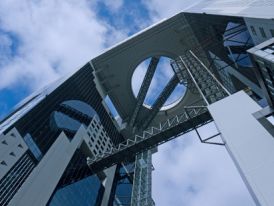
Umeda Sky Building
Umeda Sky Building
From street level, this might look like just another skyscraper, but its observation deck offers some of the best views in Osaka.
The floating observatory connects two towers with a dramatic escalator ride that feels like ascending into the clouds.
From the deck, you can see the bay stretching toward the inland sea, the sprawling network of stations that connect the city, and the colorful lights that make Osaka's skyline unique among Japanese cities.
You may think me a little weird, but I think there's something romantic about watching the city lights flicker on from 173 meters up.
I still come here when I need to remember why I love this chaotic, beautiful city, especially on clear winter days when you can see all the way to the mountains. It's one of my personal favorite things to do in Osaka.
The Umeda Sky Building sits within walking distance of Osaka Station, making it easy to combine with shopping at Grand Front Osaka or exploring the surrounding area.
Visit the Umeda Sky Building during sunset to watch the entire city transform from daylight business mode into its famous nighttime entertainment personality.
Local Tip: Ditch the Itinerary
Some of the best moments in Osaka happen when you're not following a plan. With City Unscripted, your local host builds the day around your vibe, not a fixed route. Want to spend more time at a market or duck into a backstreet bar? Go for it. There’s no schedule to keep and no rush, just a flexible experience that follows your curiosity.Make Osaka Yours in 2025
Explore the city with a local host who tailors your day to you. No scripts, no crowds, just real Osaka, your way.
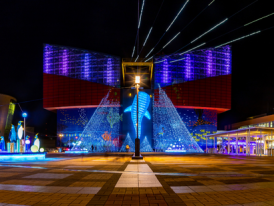
Osaka Aquarium Night
Why Osaka Aquarium Kaiyukan Deserves a Full Afternoon
Osaka Aquarium isn't just another fish tank – it's one of the world's most impressive aquariums, built around a massive central tank that houses whale sharks alongside hundreds of other species.
The first time I saw the whale sharks here, I was eight years old and convinced they were dinosaurs that had learned to swim. Twenty years later, I still feel that same sense of wonder watching them glide through the massive tank.
I've brought every visiting friend here, and it never fails to make grown adults press their faces against the glass like children.
The spiral walkway takes you from Arctic environments down to tropical Pacific depths, creating an underwater journey that feels like traveling around the world's oceans.
The Pacific Ocean tank in the center stretches multiple stories high and contains 5,400 tons of water. Watching whale sharks glide past while rays dance overhead creates moments of genuine wonder that remind you why Osaka Aquarium draws visitors from across Japan and beyond.
Located near the bay, you can easily combine your Osaka Aquarium visit with a ride on the nearby Tempozan Ferris Wheel or exploration of the waterfront area.
The aquarium's design encourages slow exploration rather than rushing through exhibits, making it perfect for families or anyone wanting to escape this city's typically frenetic pace.
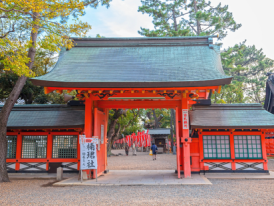
Sumiyoshi Taisha Shrine.
Ancient Peace at Sumiyoshi Taisha Shrine
Sumiyoshi Taisha will show you a completely different side of Osaka – one where ancient culture still thrives despite the surrounding modern city.
This shrine complex predates most of Osaka's famous landmarks by over a thousand years, and its distinctive architecture uses no nails in its construction.
The famous red arched bridge is especially beautiful during blossom season, when pink petals float in the water below while visitors pray for good fortune.
Unlike busier temples in Osaka, Sumiyoshi Taisha has a genuinely peaceful atmosphere where you can experience traditional culture without fighting crowds for photo opportunities.
The shrine hosts numerous festivals throughout the year, but even on quiet weekdays, the complex provides a serene contrast to Osaka's reputation as a bustling city focused entirely on food and commerce.
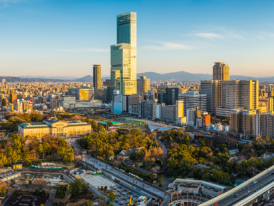
Abeno Harukas
Abeno Harukas: Japan's Tallest Views
Abeno Harukas used to hold the title of Japan's tallest building, and its observation deck delivers views that stretch all the way to Kyoto on clear days.
The building combines shopping, dining, and sightseeing in one massive complex that locals use as much as tourists.
The deck occupies the top floors, offering 360-degree views so you can see Osaka's position relative to Osaka Bay, the surrounding mountains, and neighboring cities.
Interactive displays point out landmarks and explain what you're looking at, making this more educational than just another tall building with nice views.
The elevator ride to the top takes less than a minute, but the views can keep you occupied for hours. Time your visit for late afternoon to watch the city transition from daylight to the famous neon lights that define Osaka's evening personality.
Your Osaka, After Dark (or Whenever Works for You)
Explore Osaka your way with a local who understands what you love. No set routes, just personal experiences built around you.
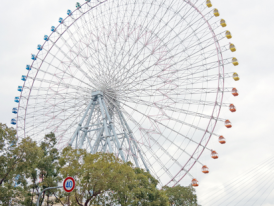
Tempozan Ferris Wheel
Tempozan Ferris Wheel: Osaka Bay from Above
The Tempozan Ferris Wheel is a gentler way to see Osaka from above, with 15-minute rides that has constantly changing views of the bay and the city beyond.
Unlike the quick elevator trips to other observation spots, the slow rotation gives you time to appreciate how Osaka spreads from the bay inland toward the mountains.
The wheel lights up with different patterns after dark, making it a landmark visible from across the city. During the day, clear weather offers views stretching to the Inland Sea and beyond, while evening rides show off Osaka's famous neon lights from a unique perspective.
Located near Osaka Aquarium, you can easily combine both attractions in a single afternoon focused on the waterfront area. The surrounding park provides space to walk off lunch before or after your ride.
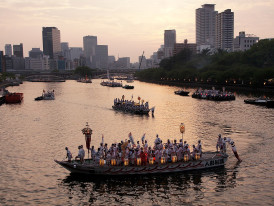
Traditional festival boats on the river during Tenjin Matsuri. Photo by 663highland via Wikicommons
Osaka Tenmangu Shrine During Festival Season
Osaka Tenmangu is the center of one of Japan's most spectacular festivals during Tenjin Matsuri in July, but even during quieter months, this shrine offers insight into how Japanese culture celebrates learning and achievement.
The shrine is dedicated to the god of learning, making it especially popular with students praying for exam success.
Tenjin Matsuri holds a special place in my family's heart – my grandfather was one of the festival volunteers for over thirty years, and he used to sneak me behind the scenes to watch the elaborate preparations.
I'll never forget being seven years old, wide-eyed as he showed me how they decorated the festival boats, each one placed with ceremonial precision.
Even if you miss the festival, the shrine's beautiful buildings and gardens make it worth visiting year-round.
The location near stations makes it easy to include in any exploration of Osaka, and the surrounding neighborhood has excellent local restaurants that most tourists never find.
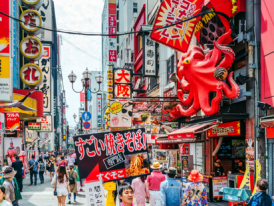
Dotonbori
Overrated Osaka (And What Locals Do Instead)
Why I Skip Dotonbori's Main Strip
Everyone tells you to visit Dotonbori, and sure, the bright lights and giant mechanical crab make for great photos. But locals avoid the main strip because it's become a tourist trap with overpriced food and crushing crowds.
Instead, I take visitors to Kuromon Market for better street food experiences, or to Fukushima district where you'll find the restaurants that locals actually frequent. For visitors who like to eat good, this has to be on their list of things to do in Osaka.
Kuromon Ichiba Market has the same variety of food without the tourist markup or impossible crowds. You can sample tasty seafood, try different types of street food like takoyaki, and actually talk to vendors instead of being pushed along by crowds.
My personal takoyaki test is simple: if the vendor doesn't flip them with the confidence of someone who's done this ten thousand times, I keep walking.
The market manages to keep its unique atmosphere because locals still shop there for daily groceries.
Fukushima district, just a short walk from Osaka Station, has excellent restaurants, cozy izakayas, and the kind of neighborhood atmosphere that makes you understand why people fall in love with Japan.
The food quality consistently exceeds that in the tourist areas, and prices reflect local rather than tourist expectations.
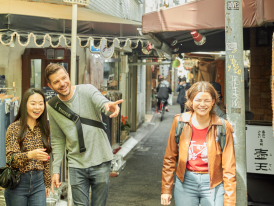
Narrow alley in Tenma district with small traditional shops and restaurants.
Skip the Chain Restaurants in Namba
Namba's main streets are lined with chain restaurants that serve decent but unremarkable food at inflated prices.
Instead of eating where tour groups stop, explore the backstreets of Namba or head to Tenma district for izakayas that have been serving the same families for generations.
The backstreets behind Namba's main shopping areas hide tiny restaurants that seat maybe eight people and serve food that will change your understanding of Japanese cuisine. One of my favorite spots, Yao Kamaboko, serves the tastiest kamaboko that I just have to get when I pass by. Nihonshu Fuku is also a great spot with a fantastic atmosphere.
These places don't always have English menus or tourist-friendly presentation, but they offer memorable Osaka experiences that shows why the city is famous for its food.
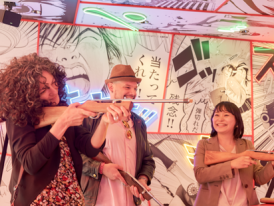
Shinsekai retro arcade
Shinsekai After Dark: Day Visits Work Better
Shinsekai gets recommended for its retro atmosphere and kushikatsu restaurants, but the area can feel sketchy after dark when drunk salarymen stumble between pachinko parlors and hostess bars. It's certainly not unsafe, but may feel a bit shady.
I'd recommend that you visit during the day to truly appreciate the retro architecture and classic Japanese signage without dealing with the area's rougher nighttime personality.
Experience Osaka with Someone Who Truly Gets It
Book a flexible and personal experience crafted around you by a local who knows the city like a friend, not a guidebook.
Amerikamura: Too Commercial Now
Amerikamura used to be Osaka's counter-culture center, but it's become increasingly commercial with chain stores replacing independent shops.
It's sad to admit, but you'll be better off checking out Kitahama or Juso districts instead for genuine alternative culture and creative energy.
Kitahama has sophisticated cafés, art galleries, and boutiques that cater to locals rather than tourists seeking "authentic" Japanese alternative culture. The area has a creative energy without the commercialization that has changed Amerikamura's character.
Juso, on the other hand, has local nightlife and genuine retro charm without the tourist-focused businesses that now dominate Amerikamura. You'll find locals enjoying themselves rather than performing alternative culture for visitors' cameras. There are many truly amazing things to do at night in Osaka.
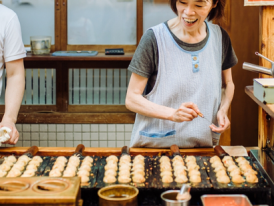
Takoyaki being prepared at a local street food stall.
Where Locals Actually Eat: Authentic Osaka Food
Street Food That Lives Up to Osaka's Reputation
Osaka's street food scene goes far beyond the obvious tourist spots. My favorite takoyaki comes from Abeno Takoyaki Yamachan, where the dashi-rich batter makes for a completely different texture than the tourist versions.
Street food stalls like this have quality that locals line up for because they consistently exceed famous shops that have become more focused on tourist volume than food quality.
Takoyaki Dōraku Wanaka Sen-Nichimae Honten sits near Dotonbori but has its local following because the crispy exteriors and gooey centers haven't changed despite the surrounding area's tourist transformation.
This popular street food shop's location makes it convenient, but the quality keeps locals coming back.
Local Tip
For a completely different takoyaki experience, try Yamachan's Tennoji location, which serves a less touristy crowd and fosters the casual atmosphere that makes street food special. I also tell visiting friends that Kōgaryū Honten in Amerikamura, known for rich dashi and balanced sauces, is a must-visit.
Local okonomiyaki restaurant with chef cooking on traditional griddle.
Okonomiyaki Beyond the Tourist Trap
Mizuno in Dotonbori still serves excellent okonomiyaki despite its tourist location, but I have to warn you. Expect lines and higher prices.
For better value and atmosphere, try Fukutaro in Umeda's backstreets. Locals go there for bold flavors without a tourist-focused presentation.
Fukutaro's location behind major shopping areas means you'll encounter more locals than tourists, and the flavors reflect what Osakans actually want rather than what tourists expect.
The restaurant maintains its neighborhood feeling despite serving Japanese cuisine that could easily attract international attention.
There's something about eating okonomiyaki while sitting on a wobbly stool in a restaurant where the chef remembers how you like your sauce mixed. It's not just food; it's a weekly ritual that makes this massive city feel like a small town.
Located along the vibrant, bustling Dotombori Arcade, Chibo is one of the city's most popular okonomiyaki restaurants. It's popular and may get busy, but the food here is worth the wait!
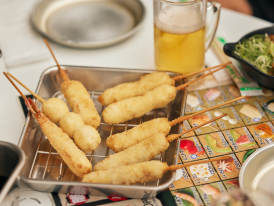
Fresh kushikatsu skewers at a traditional restaurant.
Kushikatsu Done Right
Everyone knows about Kushikatsu Daruma in Shinsekai, but locals prefer Kushikatsu Tanaka in Fukushima for better quality and atmosphere.
The Fukushima location has the same crispy skewers without the aggressive tourist atmosphere that has changed Shinsekai's character.
The quality difference comes from attention to ingredients and oil temperature rather than flashy presentation. Local kushikatsu shops focus on perfectly crispy exteriors and properly cooked interiors rather than novelty flavors designed to surprise tourists.
Note that sticking to kushikatsu etiquette – particularly the no double-dipping rule – shows respect for the tradition and ensures you'll be welcomed back.
These aren't just snacks but part of Osaka's working-class culture that deserves appreciation rather than just consumption.
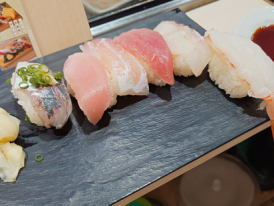
Fresh sushi from Endo Sushi
Sushi That Locals Love
Endō Sushi near Osaka Central Fish Market serves no-frills sushi that focuses entirely on incredibly fresh seafood rather than fancy presentation. The restaurant opens early to serve fish market workers, which guarantees both freshness and authenticity.
The sushi rice here is perfectly seasoned and the fish selection changes based on what's best at the market that day rather than what tourists expect to see. I love coming here and chowing down on as much sushi as my stomach can take!
The location and timing mean you'll eat alongside people who work with fish professionally, which provides context for understanding how good sushi should taste.
The lack of English menus or tourist amenities keeps prices reasonable and maintains the restaurant's local character.
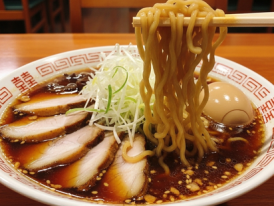
Steaming bowl of Takaida-style ramen with rich dark broth.
Ramen That Represents Osaka
My introduction to real Osaka ramen happened during my broke university days when Menya Jūrōku became my lifeline – a steaming bowl of their rich tamari broth cost less than a convenience store bento but filled me up for hours.
Menya Jūrōku serves Takaida-style ramen with tamari soy broth that represents Osaka's distinctive approach to this dish. The rich, dark broth is comfort food that locals crave rather than the lighter broths that might appeal more to tourists.
Local udon shops in Tenma and Kyoboshi offer heartwarming bowls that show how these simple noodles turn into satisfying meals in the hands of skilled cooks. These neighborhood spots focus on perfect broth and noodle texture rather than elaborate toppings or presentation.
The difference between tourist ramen and local ramen often comes down to broth depth and noodle quality rather than exotic ingredients or social media-worthy presentation. Local shops perfect their basics rather than chasing trends.
Wagyu beef being grilled at a local yakiniku restaurant.
Yakiniku Worth the Splurge
Yakiniku Motoyama in Umeda's backstreets offers high-quality grilled meat in an intimate setting that locals love for special occasions. The restaurant focuses on excellent beef and proper grilling techniques rather than flashy presentation or tourist-friendly service.
It's also is where my family celebrated every major milestone – my high school graduation, my first job, my father's promotion. I love this place and I'm sure you will too!
The location away from major tourist areas means you'll experience yakiniku as locals do – as a social meal shared with friends rather than a cultural experience performed for visitors. The quality of meat and careful attention to preparation justify higher prices.
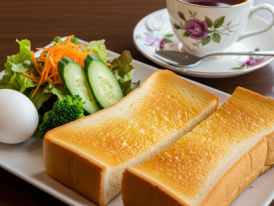
Typical Kissaten Breakfast
Osaka Breakfast Culture
In Osaka, breakfast is often simple, comforting, and practical. A bowl of tamago kake gohan (rice topped with raw egg and soy sauce) or a set of miso soup, grilled fish, and pickles is what many families grow up eating. At small neighborhood cafés, you’ll find early-morning teishoku sets (rice, soup, fish, and sides) that fuel commuters before the day begins.
Another Osaka staple is the “morning service” at kissaten cafés. Order a coffee and it often comes with extras like buttered toast, a boiled egg, or even a small salad, a Kansai tradition that locals swear by.
When I’m feeling homesick after traveling, I make myself a simple bowl of rice and egg at my tiny kitchen counter. There’s something grounding about the silky egg coating each grain, the warmth spreading through your chest on cold mornings.
If you’re after something quick, bakeries in Kyobashi or Tamatsukuri sell fresh curry-pan and onigiri that locals choose over convenience store versions. And for a special breakfast outing, head to Endo Sushi at Osaka Central Market, where locals line up for fresh sushi in the early hours.
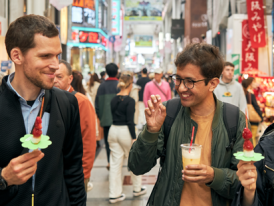
Private City Unscripted Food Experience
Food Tours and Culinary Adventures
Take a Food Tour Osaka Locals Recommend
Skip the scripted food tours that shuffle groups between the same tired stops – you'll miss the real magic happening in neighborhood kitchens and family-run stalls.
The best food experiences in Osaka are tailored to your tastes and curiosity, whether that means spending an entire afternoon learning takoyaki techniques from a third-generation chef or discovering the perfect ramen shop hidden in Tenma's backstreets.
Look for opportunities that connect you directly with local food artisans. These artisans can teach you not just what to eat but why certain flavors matter to Osaka's identity.
A personalized culinary adventure might take you to Kuromon Market at dawn, when vendors are selecting the day's freshest fish. Then, you might have hands-on sushi making with someone who learned from their grandfather. Finally, you might end with sake tasting in a 100-year-old brewery where the owner explains how rice varieties affect flavor.
Intricate latte art at Picco Latte café.
Osaka's Café and Dessert Scene That Locals Actually Visit
Coffee Culture Beyond the Chains
Picco Latte in Umeda and Nakazakicho make wildly creative latte art with seasonal themes that make each visit different. This local favorite focuses on coffee quality alongside Instagram-worthy presentation, creating a balance that satisfies both coffee lovers and social media enthusiasts.
I've spent countless Sunday mornings at Picco Latte, laptop open, pretending to work while actually people-watching through their huge windows.
There are many independent cafés in Nakazakicho and Kitahama that have cozy, character-filled spaces that prioritize atmosphere over efficiency.
Rainbow café and Café Taiyo no Tou are two of the most outstanding little shops that serve delicious coffee and food.
Traditional tea houses like Kitano Chaya provide refined matcha experiences and tea ceremony opportunities in settings that feel removed from modern Osaka's intensity.
These establishments maintain traditional culture while making them accessible to people who appreciate this country's culture beyond tourist attractions.
Desserts That Define Osaka
Rikuro's cheesecake has achieved legendary status among locals for its light, fluffy texture that differs completely from heavy Western-style cheesecakes. The slightly sweet flavor and delicate texture make it perfect for Japanese tastes, and locals often bring these cakes as gifts.
Taste Osaka With Someone Who Knows Every Flavor
From street bites to Kansai classics, explore Osaka’s food scene with a local host who tailors every stop to your appetite and interests.
Kakigori with chocolate sauce
Seasonal Treats That Mark the Calendar
Kakigori (shaved ice) stands in Kyoboshi and Namba create elaborate ice sculptures topped with seasonal fruits, condensed milk, and flavored syrups during summer months. These treats provide relief from Osaka's humid summers while offering Instagram-worthy presentation.
Wagashi (traditional Japanese sweets) reach their peak in department stores food halls like Hankyu or Takashimaya, where master craftsmen create edible art that changes with the seasons. These sweets accompany tea ceremony but also make beautiful gifts that locals give throughout the year.
Understanding seasonal treat culture helps you appreciate how Japanese culture marks time through food rather than just celebrations. Each season brings specific flavors and presentations that reflect natural cycles.

Rikuro Ojisan Cheesecake. Photo by jpellgen via Flickr
Pablo tarts, particularly the less-sweet seasonal varieties, offer another take on Western desserts adapted for Japanese preferences. Best enjoyed at Cheese Tart Pablo Shinsaibashi, the seasonal flavors reflect Japanese attention to seasonal ingredients.
Taiyaki from lesser-known shops near Tennoji and Uehonmachi fill the fish-shaped pastries with seasonal flavors beyond the standard red bean filling. These neighborhood shops experiment with flavors while maintaining traditional preparation methods.
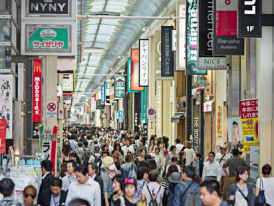
Busy Shinsaibashi shopping street with covered arcade.
Shopping in Osaka: From Luxury to Local Finds
Where Fashion Meets Function
Shinsaibashi-suji stretches for blocks with trendy fashion that appeals to young locals rather than tourists seeking "traditional" Japanese clothing. The covered shopping arcades protect shoppers from weather while providing everything from international brands to local designers.
This is where I had my first real shopping experience as a teenager – I saved up three months of part-time job money to buy a pair of boots from a tiny boutique that's sadly no longer there.
Orange Street has boutique and vintage shopping that reflects Osaka's creative culture rather than mass-market trends.
The area attracts locals looking for unique pieces and will give you the kind of shopping experience that helps you understand Japanese fashion beyond stereotypes.
Nipponbashi serves anime and manga enthusiasts with electronics and collectibles that range from tourist-friendly souvenirs to serious collector items. I highly recommend you visit. The area will give you insight into Japanese pop culture while offering goods that appeal to both casual fans and serious enthusiasts.

Tenjinbashisuji shopping arcade.
Shopping Districts with Character
Grand Front Osaka near Osaka Station (and the must-see Osaka Station City) combines upscale shopping with dining and entertainment in a complex that locals use regularly rather than just visiting for special occasions. The variety of stores and restaurants makes it a destination rather than just a shopping center.
Tenjinbashisuji claims the title of Japan's longest shopping arcade, stretching for kilometers with everything from traditional crafts to modern conveniences. The shopping arcade provides shelter from weather while offering glimpses into local shopping culture rather than tourist-focused retail.
Local department stores food halls offer edible souvenirs that locals actually give as gifts rather than obvious tourist purchases. These department stores maintain incredible quality standards and provide education about Japanese food culture through their carefully curated selections.
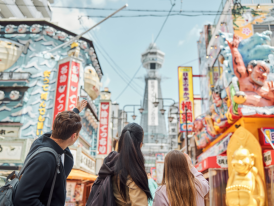
Tsutenkaku Tower rising above Shinsekai's retro streetscape.
Neighborhood Explorations: Where Locals Live and Play
Shinsekai: Beyond the Tourist Image
Shinsekai's retro charm goes beyond kushikatsu restaurants to include vintage shops, traditional game parlors, and architecture that reflects Japan's post-war optimism. This area of the New World works best during daytime visits when you can appreciate the historical context without nighttime's rougher edges.
Though not the Eiffel Tower, Tsutenkaku Tower dominates the skyline and provides views over this unique neighborhood that mixes nostalgia with modern entertainment.
Shinsekai was my secret playground as a kid when my uncle would take me there on Saturday afternoons while my parents thought we were at the library. He'd buy me ramune soda and we'd play the old-fashioned games at the arcade parlors, where ancient pinball machines still worked perfectly despite being older than my father.
Nakazakicho neighborhood
Nakazakicho: Osaka's Creative Heart
I found Nakazakicho during university when I was desperately seeking somewhere that felt different from mainstream Osaka.
The narrow alleys reminded me of secret passages, and I'd spend entire afternoons getting lost among the vintage shops and art galleries. It's still my go-to neighborhood when I need creative inspiration or want to show visitors that Osaka has hidden depths.
Nakazakicho packs vintage shops, independent cafés, and artistic spaces into narrow streets that feel completely different from Osaka's commercial districts. The area attracts creative locals and provides insight into alternative culture that exists alongside mainstream Japanese society.
The neighborhood's vintage shops have carefully curated clothing and accessories that reflect Japanese appreciation for quality and style rather than fast fashion trends.
Artistic spaces throughout Nakazakicho feature local creators working in everything from traditional crafts to contemporary art. The concentration of creative businesses creates an atmosphere that encourages exploration and supports local artists.
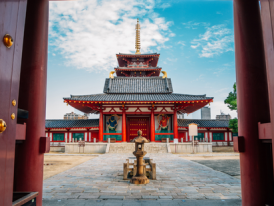
Shitennoji Temple Osaka
Tennoji: Modern Meets Traditional
Tennoji combines modern shopping malls with parks and cultural experiences that show how contemporary Osaka maintains connections to its history. The area has impressive variety that appeals to locals rather than focusing exclusively on tourist attractions.
Sumiyoshi Taisha's proximity to Tennoji allows visitors to experience ancient Japanese culture alongside modern conveniences. This combination reflects how Japanese cities integrate historical preservation with contemporary development.
The parks around Tennoji have green space that locals use for recreation and relaxation.
25,902+ 5-Star Reviews and Counting
Trusted and recommended by travelers worldwide, including 99% on Google and TripAdvisor.

Colorful street art and fashion boutiques in Amerikamura.
Amerikamura: Youth Culture Central
Amerikamura continues to attract young people despite its increasing commercialization. The area reflects how global influences blend with local preferences to create unique cultural expressions.
Yes, I mentioned earlier that Amerikamura has become too commercial for my taste as an adult, but I'd be lying if I said it didn't shape who I am today.
It was my rebellion headquarters during high school – I'd skip last period to hang out here, buying cheap vintage band t-shirts and pretending to be cooler than I actually was.
The street artists who painted murals on the walls became like older siblings to me, teaching me about music and art. One graffiti artist used to let me watch him work and would explain how each piece reflected local life and youth frustrations that adults didn't understand.
Vibrant street art throughout the neighborhood reflects creative energy that persists despite commercial development. These artistic expressions show how local culture adapts to change while maintaining distinctive character.
Fukushima neighborhood
Fukushima: Where Locals Eat and Drink
Fukushima district has an excellent food scene concentrated into walkable blocks that locals frequent for both casual meals and special occasions. The area provides restaurant density and quality that rivals more famous districts without tourist-focused pricing, making it one of the great restaurants districts in Osaka.
Cozy izakayas throughout Fukushima serve as social centers where locals gather after work to share food and conversation. Spots like Izakaya Kiraku and Izakaya Bange Ya not only have tasty food, but a fantastic atmosphere.
The neighborhood's location near major stations makes it easily accessible while maintaining its local character.
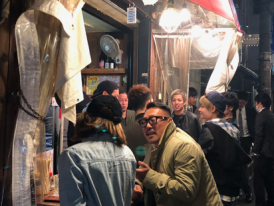
Locals eating and drinking in Juso
Juso: Local Nightlife Off the Tourist Path
Juso boasts local nightlife and genuine retro charm that appeals to Osakans rather than tourists seeking "authentic" Japanese nightlife experiences. The area has a working-class character while offering entertainment options that are based on local preferences.
Retro architecture and traditional businesses throughout Juso can give you glimpses into Osaka's past while serving contemporary needs. The area shows how Japanese neighborhoods maintain identity while adapting to modern requirements.
I particularly enjoy eating at Gyoza Mantaro, where my friends and I always order the restaurant's "Thin Skin Gyoza" filled with rich flavors.

Traditional bunraku puppets. Photo by Dunphasizer via wikicommons
Things to Do in Osaka by Interest: Matching Activities to Your Passions
Art and Culture Experiences
The National Museum of Art, Osaka houses contemporary works alongside traditional pieces in a building that's itself an architectural achievement.
The Osaka museum's underground galleries create unique viewing experiences while protecting art from environmental damage.
Traditional temples and shrines like Shitenno-ji offer opportunities to experience culture that predates Osaka's commercial reputation. These sites keep alive active religious practices while welcoming visitors who approach with respect and curiosity.
Bunraku puppet theater is one of Japan's most sophisticated traditional performing arts, with puppeteers who train for decades to master their craft.
Performances combine music, narration, and incredibly detailed puppet manipulation to create dramatic experiences unlike anything in Western theater.
The first time I saw Bunraku puppet theater, I thought it would be boring traditional stuff. Three hours later, I was crying over a puppet's tragic love story. The artistry is so intricate that you forget you're watching wooden figures – they become more human than most movies.
It's one of those uniquely Japanese experiences that changes how you see traditional art.
Osaka's street art scene also goes further than tourist areas and into neighborhoods where local artists create works that comment on contemporary Japanese society. Finding these pieces requires exploration but can give you insight into creative expression that exists alongside mainstream culture.
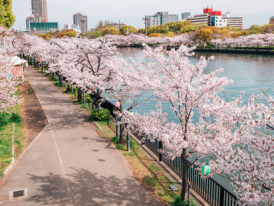
Cherry blossoms road with river in Kema Sakuranomiya Park
Outdoor Activities and Natural Escapes
Cherry blossom viewing at Kema Sakuranomiya Park and Osaka Castle Park provides spectacular seasonal experiences that locals anticipate all year.
These parks are community gathering spaces during bloom season, with families and friends sharing food and celebrating spring's arrival.
A day trip to Minoh Park offers nature trails and waterfalls within easy reach of central Osaka. The park provides hiking opportunities and natural beauty that create complete contrast with urban experiences while remaining accessible by public transportation via cable car.
Spa World and traditional sento bathhouses offer relaxation experiences that range from modern luxury to neighborhood traditions. These hot springs facilities will give you insight into Japanese bathing culture while offering genuine relaxation after days of urban exploration.
Riverside water buses and Dotonbori canal cruises provide different perspectives on Osaka's geography and development. These boat rides show how the city grew around its waterways while offering comfortable transportation between different areas.
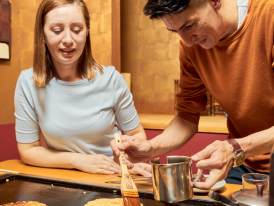
Cooking okonimiyaki
Hands-On Cultural Experiences
Cooking classes specializing in Osaka cuisine teach techniques for making takoyaki, okonomiyaki, and other local specialties while providing cultural context for understanding foodie culture. These cooking classes often include market visits that show how locals select ingredients.
I hope all visitors will try their hand at a class or two. It's a great way to taste truly Japanese meals and take home the recipe to impress friends with.
The cooking process is all about techniques that make simple ingredients into satisfying meals through sushi making and other traditional methods.
Food markets like Kuromon Ichiba also has many opportunities to sample different foods while learning about Japanese ingredients and preparation methods.
Sake tasting experiences in local sake bars introduce the complexity of Japan's national drink while providing social experiences that reflect how locals enjoy alcohol. These tastings often include food pairings that enhance both sake and snack flavors.
The beauty of this city is how many different things to do in Osaka can match whatever you're passionate about. Whether you're an art lover, outdoor enthusiast, or hands-on learner, there's something here that'll click with your interests. Not just generic tourist activities, but experiences that locals actually value.
Osaka After Dark: Nightlife That Locals Love
Karaoke Culture and Late-Night Fun
Karaoke bars around Namba and Shinsaibashi range from elaborate theme rooms to simple neighborhood spots where locals gather for after-work entertainment.
You won't find it hard to get a good spot. Karaoke bars like BIG ECHO Namba Ebisubashi and Namba Honten are easy to reach and tourist-friendly.
The variety reflects how karaoke serves different social functions rather than just tourist entertainment, with some locations featuring photo booth areas for group memories.
My friends and I have a standing monthly karaoke reservation at a tiny box in Namba where the machine still has songs from the 1980s. We're terrible singers, but after three drinks, we sound like pop stars to ourselves. You can too!
Understanding karaoke etiquette helps you participate in local culture rather than just consuming an experience. The social aspects matter as much as the singing, with participants supporting each other regardless of vocal ability.
Late-night karaoke sessions often last past midnight, reflecting Japanese work culture and social patterns.

Busy izakaya counter with locals enjoying drinks and small plates.
Izakaya Hopping and Local Drinking Culture
Izakaya hopping in Tenma and Fukushima districts is another way to get insight into Japanese after-work social culture while enjoying incredible food and drink variety. You'll see just how locals unwind while maintaining the social connections that define Japanese working life.
Every izakaya specializes in different foods and atmospheres, from traditional to modern interpretations of Japanese pub culture.
Some of my closest friendships were forged over yakitori and beer in these cramped, smoky spaces where the staff remembers your favorite drink and asks about your life with genuine interest.
There's something deeply human about bonding over shared plates and clumsy chopstick technique that makes you understand why this tradition has survived for centuries – it's where Osaka's famous warmth and humor truly shine.
Discover Osaka Your Way with a Local by Your Side
Skip the generic group tours. These flexible, one-of-a-kind experiences are built entirely around your interests, day or night.
Underground Bars and Live Music
Kitashinchi's underground bars and live music spots cater to sophisticated tastes while maintaining intimate atmospheres that encourage conversation and connection. These venues reflect Osaka's appreciation for quality entertainment beyond mass-market options.
I highly recommend Bar K, a stylish, intimate space. With its dim atmospheric lighting it feels like stepping into a 1940s film noir, and the bartender crafts classic cocktails with an artistry that borders on meditation.
Another great spot, Bar Nayuta, is a cozy little shelter just in front of Amerikamura where musicians gather for impromptu sessions until dawn.
Although the underground bar scene requires some exploration and local knowledge, it rewards visitors with unique experiences that provide memories beyond typical tourist activities. These venues often become highlights of longer stays in Osaka.

Late-night desserts in Osaka
Late-Night Dessert Culture
Late-night dessert cafés and matcha bars offer sweet endings to evening adventures while catering to Japanese preferences for lighter late-night eating. These establishments often stay open past midnight to serve shift workers and night owls.
Matcha bars offer traditional tea ceremony elements in contemporary settings that appeal to young locals while maintaining cultural traditions. The combination creates experiences that feel both modern and historically connected.
My late-night sweet tooth awakened during university when study sessions would stretch past midnight and I'd desperately need something to keep me going. I discovered this whole world of dessert cafés that stayed open late, filled with shift workers, insomniacs, and fellow students like me.
One memorable night, after finishing a particularly brutal exam, my friends and I ended up at Shisha Cafe GEEK – bringing a taste of Middle-Eastern culture to Japan, it's renowned for its wide array of flavorful shisha, also known as hookah.
I can promise that if you go looking for one of these bars, you'll be blessed with many memorable experiences.
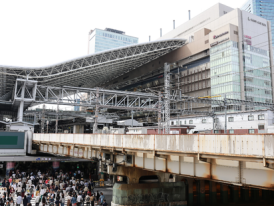
Busy Osaka train station
Practical Tips for Visiting Osaka
How Do You Get Around Osaka Efficiently?
Osaka's extensive subway and JR train network connects every neighborhood mentioned in this guide, but understanding the system requires some planning.
The Osaka Metro runs most frequently during commuting hours, while JR lines connect to other cities and Osaka Station serves as the main hub for regional travel.
Buy an ICOCA card at any station to simplify train travel and avoid fumbling with individual ticket purchases. The card works on all train systems and many buses, plus you can use it for purchases at convenience stores and vending machines throughout the city.
Stations like Osaka Station, Namba Station, and Tennoji serve as major hubs where multiple lines intersect. Learning these connection points helps you plan efficient routes and understand how different neighborhoods connect to each other.
Peak hours (7-9 AM and 5-7 PM) bring crushing crowds that make travel uncomfortable and slow. Plan major movements outside these windows when possible, and always stand to the right on escalators to allow faster passengers to pass.
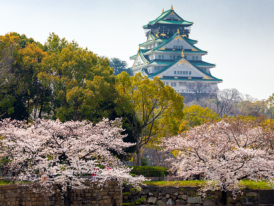
Early morning at Osaka Castle
When Should You Visit Popular Attractions?
Most major attractions open by 9 am, but arriving at opening time helps you avoid the worst crowds and heat during the summer months. Osaka Castle, Universal Studios Japan, and the Osaka Aquarium all become significantly more crowded after 11 am, especially on weekends.
Weekday visits to popular spots like the Umeda Sky Building observation deck and Universal Studios provide dramatically better experiences with shorter lines and more relaxed atmospheres. If you must visit on weekends, arrive early or stay late to avoid peak crowds.
Cherry blossom season (typically early April) brings massive crowds to outdoor attractions like Osaka Castle Park, but the experience justifies the inconvenience if you appreciate natural beauty and cultural celebrations.
Summer heat and humidity can make outdoor activities uncomfortable, so plan indoor alternatives like exploring department stores, museums, or shopping arcades during the hottest afternoon hours.

Praying at an Osaka shrine
Essential Japanese Etiquette for Better Experiences
Bowing slightly when greeting restaurant staff or shop employees shows respect and often results in friendlier service. You don't need perfect form – a small nod with sincere appreciation works better than awkward attempts at formal bows.
Removing shoes when entering traditional buildings, some restaurants, and temples is mandatory rather than optional. Pay attention to shoe racks or designated areas, and wear decent socks since your feet will be visible.
Quiet behavior on trains and in public spaces reflects Japanese social expectations and helps you blend in rather than standing out as a disruptive tourist. Save phone conversations and loud discussions for private spaces.
Cash remains essential despite Japan's modern reputation – many small restaurants, temples, and local shops don't accept cards. Withdraw money from 7-Eleven ATMs, which accept foreign cards reliably.
Smart Use of Convenience Stores and Coin Lockers
Convenience stores (kombini) provide far more than basic supplies – you can pay bills, ship packages, withdraw money, and buy incredibly good food 24 hours a day. FamilyMart, 7-Eleven, and Lawson locations appear every few blocks throughout the city.
Coin lockers at major train stations allow you to store luggage while exploring neighborhoods, but they fill up quickly during peak tourist seasons. Look for less obvious locations in department stores or smaller stations for better availability.
Convenience store food including onigiri, sandwiches, and hot foods often exceeds restaurant quality while costing a fraction of tourist-focused establishments. These stores offer budget-friendly alternatives that locals rely on daily.
Hotel check-in times rarely accommodate early arrivals, but most hotels will store luggage while you explore. Don't waste half a day waiting in hotel lobbies when you could be experiencing the city.
Accommodation Options Beyond the Obvious
Capsule Hotels for the Full Experience
These unique hotels provide uniquely Japanese accommodation experiences that range from basic sleeping pods to luxury versions with private bathrooms and entertainment systems. They offer insight into Japanese efficiency and space utilization while providing budget-friendly options in central locations.
Modern capsule hotels often include amenities like saunas, communal baths, and high-tech features that make the small sleeping spaces comfortable. The experience appeals to solo travelers who want to maximize their location budget while trying something distinctly Japanese.
I suggest you shop around. Some of these hotels cater specifically to international visitors with larger pods and English-speaking staff, while others maintain their local character with Japanese-only signage and traditional protocols.
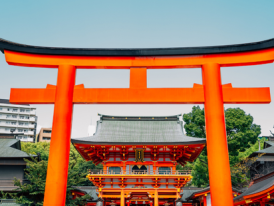
Ikuta Shrine in Kobe
Day Trips and Extended Adventures
Exploring Beyond Central Osaka
Day trip options from Osaka include visits to nearby castles, mountain hiking, and coastal areas accessible by train. These excursions provide contrast to urban experiences while remaining easily accessible from major stations.
Mountain areas offer hiking trails, hot springs, and traditional villages that show different aspects of Japanese life beyond urban centers. Cable car access makes many destinations suitable for visitors with varying fitness levels.
Coastal day trips provide beach experiences, delicious seafood, and maritime culture that complements Osaka's urban personality. These areas remain easily accessible by train while offering completely different atmospheres.
See Osaka with Someone Who Truly Knows It
These flexible experiences are led by locals and tailored to you, not a tour script. Real Osaka, your way.
FAQs
What Is Osaka Best Known For?
Osaka is famous worldwide for its incredible foodie culture, from street food like takoyaki and okonomiyaki to high-end restaurants that earn Michelin stars.
The city's "kuidaore" culture – eating until you drop – reflects local passion for yummy food that goes far beyond simple sustenance.
The city also has a reputation as a comedy and entertainment center, with locals known throughout Japan for their humor, friendliness, and outgoing personalities. This social culture creates welcoming atmospheres that make visitors feel included rather than observed.
Modern attractions like Universal Studios Japan and traditional sites like Osaka Castle show how the city balances historical preservation with contemporary entertainment.
Is Two Days in Osaka Enough Time?
Two days allows you to experience Osaka's major attractions like Osaka Castle, Universal Studios Japan, and the Umeda Sky Building observation deck, plus sample the local cuisine through street food and local restaurants. This timeframe provides a solid introduction but barely scratches the surface.
A focused two-day visit should prioritize either cultural attractions (castle, temples, traditional neighborhoods) or modern entertainment (Universal Studios, shopping, contemporary districts). Trying to cover everything results in rushed experiences that don't provide real understanding.
Is Osaka Worth Visiting for International Tourists?
Osaka offers experiences you can't find elsewhere when you visit Japan, from unique foodie culture to distinctive local personality that differs significantly from Tokyo or Kyoto. The city gives you genuinely Japanese experiences without feeling overly formal or intimidating to foreign visitors.
The combination of traditional attractions, modern entertainment, and incredible food creates variety that appeals to different travel styles and interests. Whether you prefer cultural exploration, family fun, or culinary adventures, Osaka delivers options.
What Makes Osaka Unique in Japan?
Osaka's foodie culture goes deeper than any other Japanese city, with local specialties that evolved here and remain best experienced in their original context. The city's merchant history created a culture that values good food and warm hospitality over formal protocol.
Local personality differs noticeably from other Japanese cities; Osakans are more outgoing, funny, and direct in their communication style. This creates social experiences that feel more relaxed and accessible to foreign visitors but is still Japanese at the core.
The city successfully balances preservation of traditional culture with embrace of modern entertainment and international influences. This balance creates experiences that feel both familiar and exotic to international visitors.
Kyoto or Osaka: Which City Should You Choose?
Kyoto focuses on traditional culture, temples, Zen gardens, and historical preservation, making it ideal for visitors seeking "classical" Japan experiences. The city maintains its traditional character but can feel formal and museum-like rather than living culture.
Osaka provides modern Japanese urban culture alongside historical attractions, with better food, more welcoming locals, and entertainment options that reflect contemporary Japan. The city feels more alive and accessible while still offering traditional experiences.
Many visitors combine both cities since they're connected by frequent trains that take less than an hour. This combination provides traditional experiences in Kyoto balanced by modern urban culture in Osaka, creating comprehensive understanding of Japanese society.
For first-time visitors to visit Japan with limited time, Osaka has more variety and practical experiences that help you understand contemporary Japanese life alongside historical culture.
Special Attractions and Unique Experiences
Namba Yasaka Shrine: A Photogenic Surprise
Namba Yasaka Shrine is one of Osaka's most Instagram-worthy sights with its giant lion head stage that dominates the small shrine grounds. Unlike major temple complexes, this shrine provides a quick but memorable photo opportunity that combines traditional architecture with dramatic artistic elements, complete with photo booth areas for visitors.
The shrine's location in Namba makes it easily accessible during shopping or dining excursions. The giant lion head, designed to "swallow" evil spirits and bad luck, creates striking photos especially during festival celebrations.
Visit the shrine during quieter morning hours to avoid crowds and capture better photos of this unique architectural feature while enjoying this tranquil spot amid central Osaka's bustle.
Shopping Streets Beyond the Obvious
The shopping streets of central Osaka extend far beyond famous covered arcades to include neighborhood commercial areas where locals do daily shopping. They provide insight into contemporary Japanese retail culture alongside traditional shopping experiences.
Local shopping streets often center around stations, creating convenient hubs where commuters can handle daily necessities. These areas combine practical shopping with food options that cater to local schedules and preferences.
Understanding how locals use shopping streets helps visitors appreciate Japanese urban planning and community organization beyond tourist-focused retail districts.
Experience the Real Spirit of Osaka
Things to do in Osaka go far beyond checking famous attractions off lists – they involve understanding how this place balances tradition with innovation, formality with warmth, and local culture with international influences.
Whether you spend your time exploring Universal Studios Japan, learning about Japanese history at Osaka Castle, or discovering the street food that makes this city famous throughout Japan, remember that the best experiences often happen when you venture beyond the obvious tourist path.
The neon lights and famous landmarks provide great photos, but the small restaurants, neighborhood festivals, and chance encounters with locals create lasting memories.
Osaka rewards curiosity, appetite, and openness to experiences that don't always match guidebook expectations. This vibrant city continues evolving while maintaining the character that makes it unique among Japanese destinations.
From the bustling energy of central Osaka to quiet moments in traditional temples, every neighborhood offers something different while contributing to the overall experience that makes visitors fall in love with Japan.
When you visit Osaka, you're not just seeing another Japanese city – you're experiencing a place where ancient traditions blend seamlessly with cutting-edge entertainment, where street food culture reaches artistic heights, and where locals welcome visitors with genuine warmth.
From the Wizarding World of Harry Potter at Universal Studios to Zen gardens tucked away in city temples, Osaka offers things to do that satisfy every type of traveler.
Ready to dive deeper into Osaka's local culture? Consider booking private tours in Osaka that can take you beyond the standard tourist routes and help you visit Osaka like a local, experiencing the neighborhoods and traditions that make this place so special.
More of Osaka to Explore
Make Your Osaka Trip Personal
See Osaka experiencesWhy Trust This Guide?
It’s written by a local host; the same kind of person who helps travelers explore Osaka every day.
Chat with a Local About Your Osaka Trip
Book a quick call with someone who actually lives in Osaka. Ask questions, get insider tips, and plan a trip that feels right for you.
